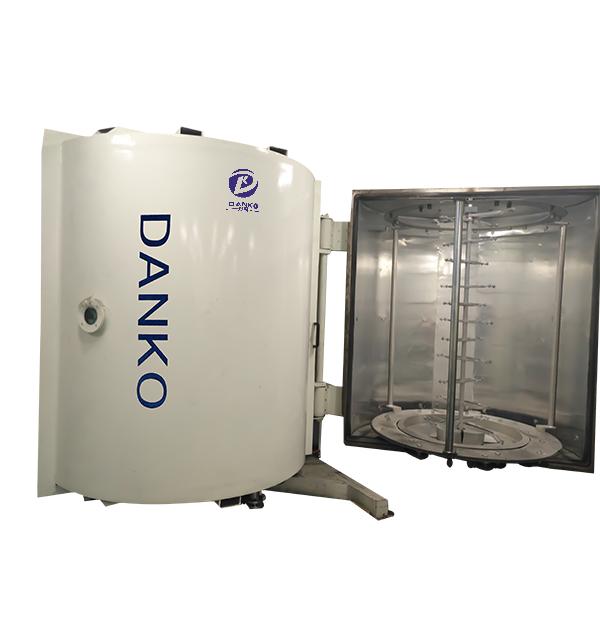Product Consultation
Your email address will not be published. Required fields are marked *
Thermal Evaporation Vacuum Coating Machine
System Summary
DankoVAC Evaporation Vacuum Plating Machinery is easy to operate with high performance, equipped with thermal evaporation system, to melt and vaporize the metal wire (like aluminum wire, brass wire) to deposit on the substrates, to get the metallic effect of decoration and beautified.
• Structure Type: Vertical structure with single or double doors or Horizontal structure with single door.
• Substrate Material: ABS, PS, PC, PP, PVC, Nylon, TPU (Plastic materials), acrylic glass.
• Coating Film: Aluminum, Chrome, Copper.
• Color: Silver, Gold, Semi-transparency, Red, Blue, Green, Grey, Black, Multicolor, purple and so on.
• Equipment with: UV line / manual spraying / soaking method.
• Consumables in production: Aluminum / Chromium / Brass Wires, Painting oil and color
APPLICATION:
• Disposable tableware, such as fork and spoon.
• Plastic Artworks, such as Christmas ball, plastic pearls.
• Clothing Accessories, such as buttons, zippers.
• Shoe Materials, such as heels, shoes flowers.
• Fittings, such as fan button, toys, phone shell, cosmetic bottles and caps.
• Glass jewelry, glass diamond, rhinestone.
• Car logo, Exterior & Interior Trim parts, car wheels.
• Other plastic products.
Your email address will not be published. Required fields are marked *
 Tel: +86-13486478562
Tel: +86-13486478562 FAX: +86-574-62496601
FAX: +86-574-62496601 Email: [email protected]
Email: [email protected] Address: No. 79 West Jinniu Road, Yuyao, Ningbo City, Zhejiang Provice, China
Address: No. 79 West Jinniu Road, Yuyao, Ningbo City, Zhejiang Provice, China OEM/ODM PVD Coater Manufacturers
OEM/ODM PVD Coater Manufacturers